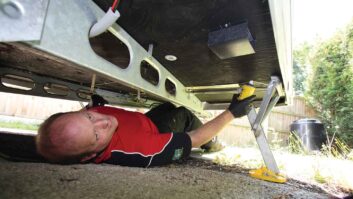An increasing number of caravanners are making the decision to install state-of-the-art caravan trackers in their prized leisure vehicles to protect them from would-be thieves.
It’s a sad fact that a motivated thief, armed with the right equipment, could crack almost any type of physical security accessory. Of course, having the best caravan wheel lock and the best caravan hitchlock will delay them, and may even deter them enough to make them move on to easier prey, but ultimately, a thief with an oxyacetylene torch is going to take some stopping.
This is why trackers are becoming an increasingly popular choice among caravan owners. Should the worst happen and your tourer be stolen, these small gadgets can be used to help the police track it down and reunite you with your tourer. So how do they work and what should you know before you invest in one? I’m talking you through everything you could need to know, from the power they run on to how a tracker got on when put to the test.
Caravan trackers: all you need to know
What is a caravan tracker?
How do caravan trackers work?
Monitored or not?
Caravan tracker power supply
Caravan tracker subscriptions
Insurance discounts
Getting a tracker professionally installed
Testing a caravan tracker
The verdict on trackers
Trackers for caravans
What is a caravan tracker?
A tracker is a small electronic device that will help the police to locate and recover stolen caravans. The caravan security unit is secreted somewhere inside the van where it can’t easily be spotted. When the system is activated, it sends out an alert to the owner or the tracker company’s HQ.
How do caravan trackers work?
When activated, the tracker delivers a signal using GPS (Global Positioning System), GSM (Global System for Mobile Communications) or VHF (Very High Frequency radio signals) technology. The source of this signal can be pinpointed, revealing the leisure vehicle’s location.
A GPS module communicates constantly with satellites to determine its precise location, while GSM technology achieves this by transmitting its positional data via mobile phone cell towers. This data can then be triangulated to work out the transmitter’s exact location.
VHF trackers emit VHF radio waves, the direction and strength of which are used in triangulating the van’s position. Although this is effective for short- to medium-range tracking, some systems require line-of-sight communication.
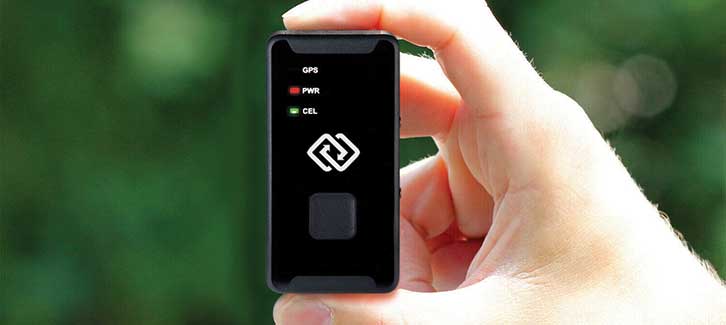
In the case of the leisure vehicle alarm being triggered, the best systems instantly alert the HQ and the owner. The police can then be contacted and use their own equipment to track the real-time location and direction of travel of the stolen van.
Owners of caravans with this tech can check that their tourer is safe and sound using a secure online portal or a mobile app to confirm its location. They can also review its travel history and other data.
The best trackers will be linked to a comprehensive alarm system, which detects doors opening, intruders moving inside the van and any tilt and motion.
These systems work together, so if the alarm is triggered, the tracker sends a tamper alert and real-time location data to HQ, and sometimes the owner’s phone.
Some trackers allow caravan owners to set up ‘geofences’, virtual perimeters around specific areas. If the caravan exits or enters its geofenced area, the owner receives an alert. This can be useful if you’re storing a caravan in storage facilities, where a tourer may need to be moved within the secure area, for, say, access, maintenance or caravan cleaning.
Monitored or not?
There are a number of standalone tracker systems that caravan owners can fit to their tourer and monitor themselves. These units tend to have an integral battery, so are simple to fit once they’ve been linked to an app on your phone.
The latest models use versions of GPS (some may use the Russian equivalent, GLONASS) and will update the vehicle’s location every 30 seconds.
This type of service requires payment of a subscription; for example, for the £80 SpyTrack Nano, the fee is £59.99 for 12 months or £114.99 for 24 months.
Without independent monitoring, if the unit sends you an alert, you have to contact and deal with the police yourself. And of course, to attempt to pursue and confront caravan thieves yourself would be dangerous and should never be tried. Always contact the police in relation to any tracker alerts that you receive.
The best tracking companies will have excellent working relationships with local police forces, who will understand how their systems function and have the right equipment to track any stolen vehicle themselves. They will also be able to advise you on the best course of action.
Caravan tracker power supply
Caravan trackers can be powered by an internal battery or wired to the best leisure battery for a caravan – or both, in case the thief also decides to disconnect the battery.
Wired trackers generally consume a small amount of continuous power to function. While the current draw is low, over a long period in storage (especially in winter), the leisure battery can become depleted. Installing a solar panel to keep the battery topped up during extended periods of storage is a good solution, because it means your tracker should never be without sufficient power.
Some of the best caravan covers can be purchased with windows stitched into them, which will allow your solar panels to charge.
Caravan tracker subscriptions
Most trackers require the caravan owner to pay a subscription for continuing data access and support. This is in addition to the initial installation fee and could be payable monthly, annually or on the basis of a longer contract.
For example, the £249 Retrieve by Tracker is a one-time-use locator with subscription options for 12 months (£159), 24 months (£269) and 60 months (£659).
Insurance discounts
The best and most reputable tracking systems will often attract a 5% or 10% insurance discount, which will go some way towards offsetting the cost of the unit or the subscription.
Getting a tracker professionally installed
We went to Downtide Caravans in North Norfolk, to watch Andy, one of the firm’s expert technicians, fitting a tracker.
Andy installed a £788 Lockdown alarm and tracker system from Outsmart the Thief – monitoring for this system costs £99, £255 or £399 for one, three or five years, respectively.
“The alarm and tracker work seamlessly together to deliver peace of mind,” says OSTT director Carl Meyer. The system offers 365 days a year monitoring, a panic/caravan finder mode, wireless window contacts, a failsafe override dongle, pet setting, self-repair technology and much more. You can even take it with you if you’re buying a new caravan.
1. The Outsmart the Thief tracker and alarm – a lot of tech in a small box!
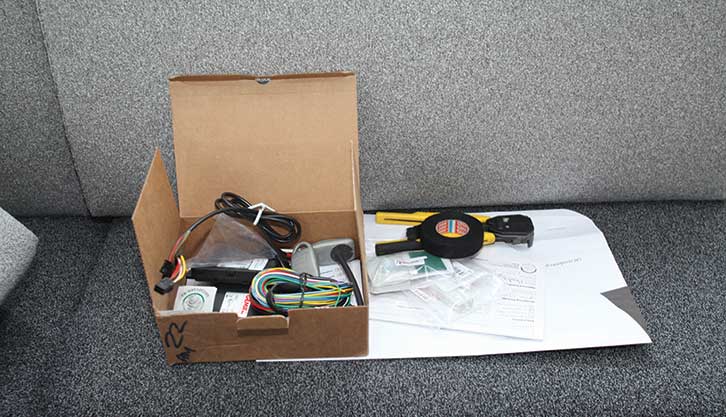
2. Andy at Downtide Caravans begins by planning how to fit the system.
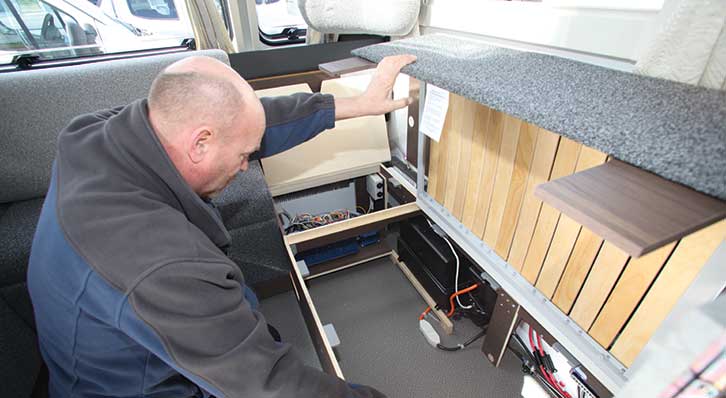
3. Relays are used to make the sidelights flash when the alarm is triggered.
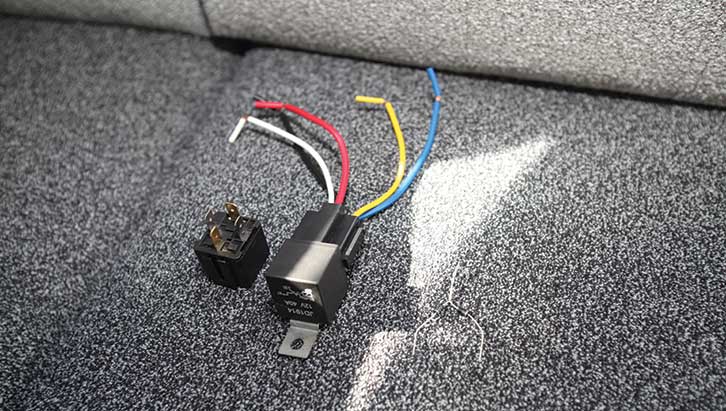
4. The first task is to create an electrical feed from the caravan’s system.
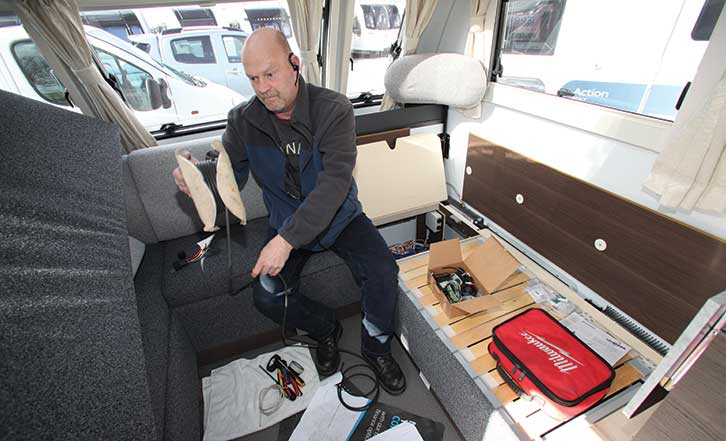
5. The relay is carefully soldered so it can be connected to the loom.
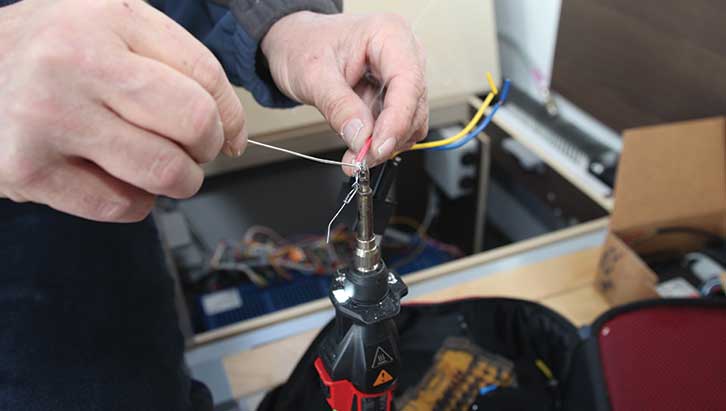
6. Then all of the connections are protected with insulating tape.
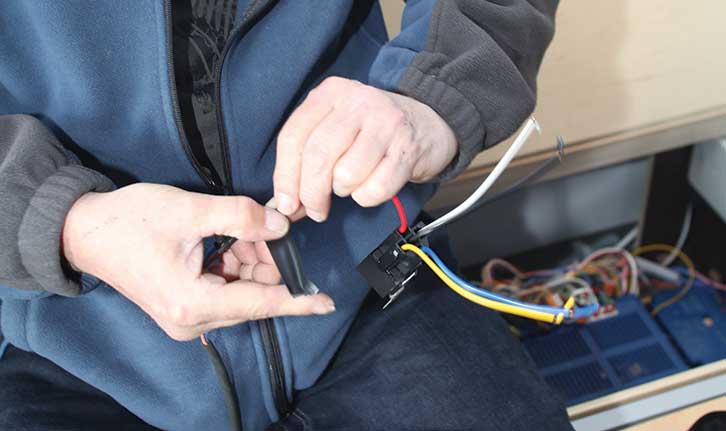
7. The main power cable is wrapped with specialist wiring harness loom tape.

8. Andy feeds in the alarm power cable via a hole drilled for the caravan motor mover.

9. Box controlling both alarm and tracker is hidden somewhere in the caravan.
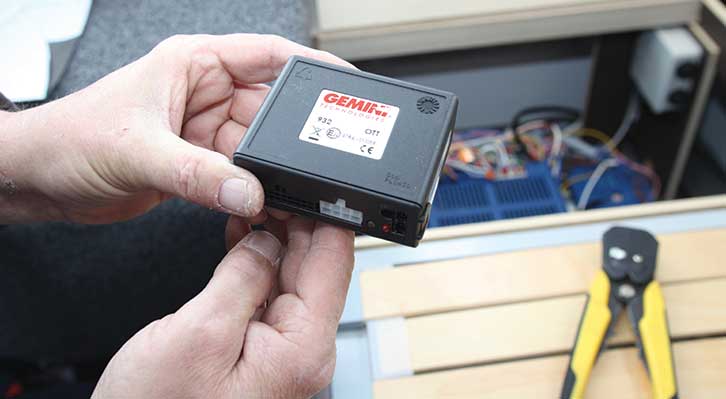
10. The alarm is then connected up to the caravan’s electrical system.
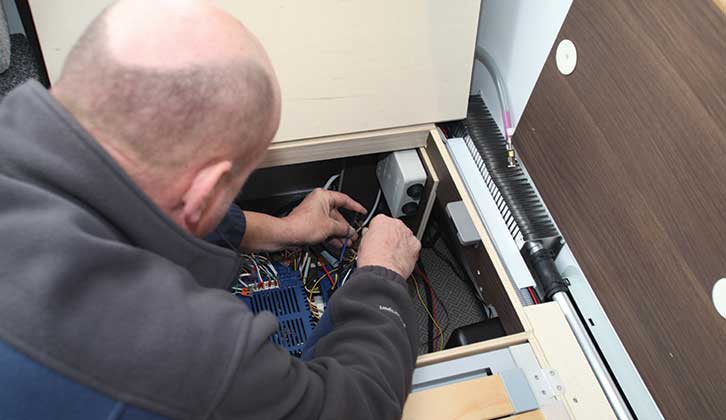
11. The alarm is triggered by movement or doors opening, and via PIR sensors.
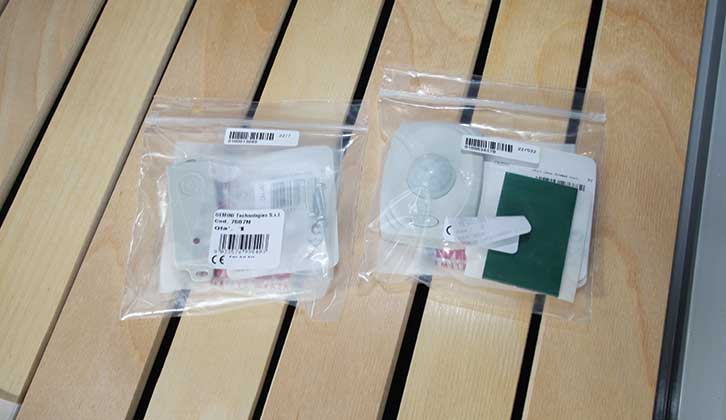
12. With the system wired up, Andy tests the siren, which is reassuringly loud!
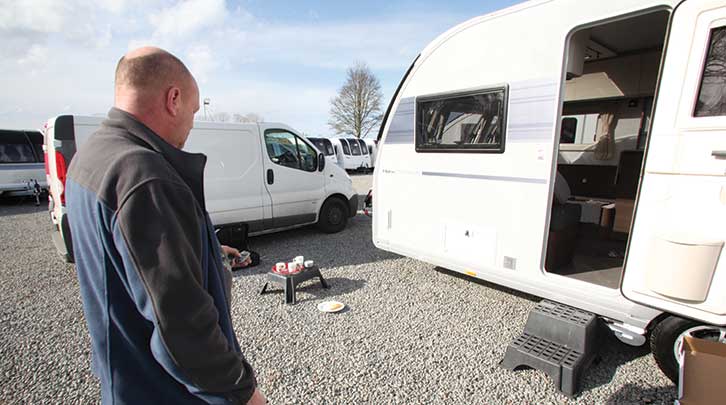
13. Now the Outsmart the Thief paperwork is completed and the system registered with the company’s monitoring network.
14. PIR baseplate is attached to the ceiling, where sensor can ‘see’ the entire interior. In this position, it is also tamperproof.
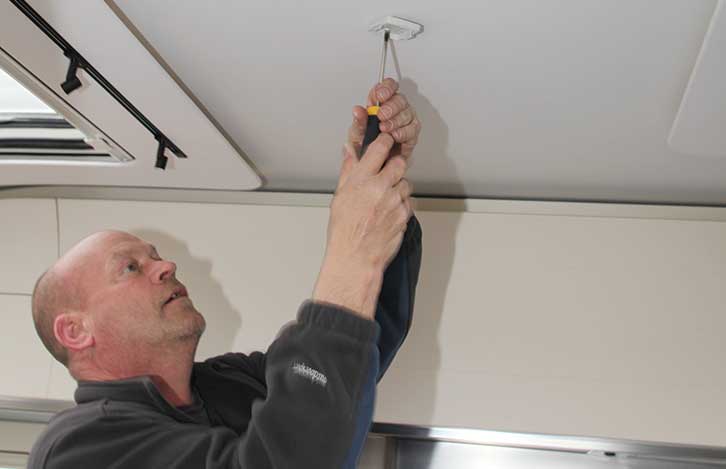
15. Finally, Andy locates the best spot for the door sensor. The flyscreen and door mouldings can make this more difficult.
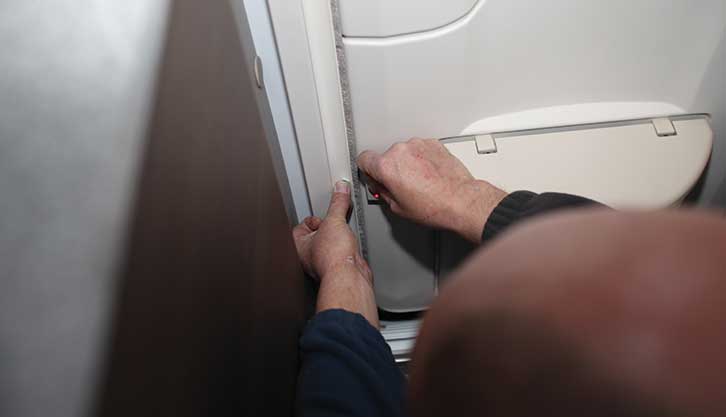
Testing a caravan tracker
We had an Outsmart the Thief tracker and alarm fitted in early 2023, and at the time, I revealed to the OSTT team that we would be ‘stealing’ the van sometime in the future, as part of our real-world test, and assessing the firm’s response.
Fast-forward to the summer and we’re back with the Adria at its home location in Cambridgeshire.
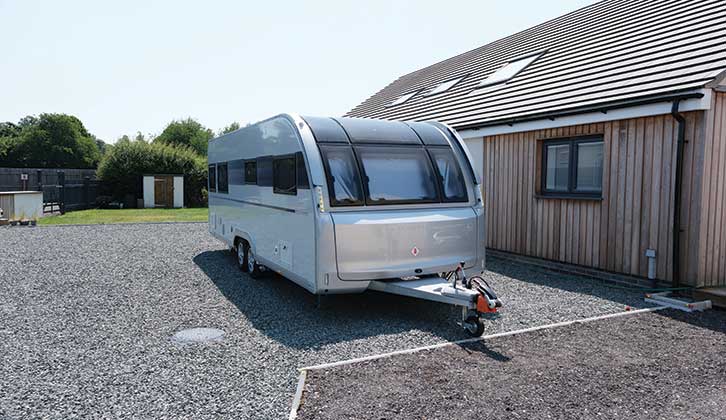
Our fake thief begins by ‘attacking’ the luxury caravan’s locks, then winds up the corner steadies and hooks up his car.
However, as soon as he pulls away, the alarm on the Adria is triggered, the siren sounds and the indicator lights start to flash. We start the stopwatch.
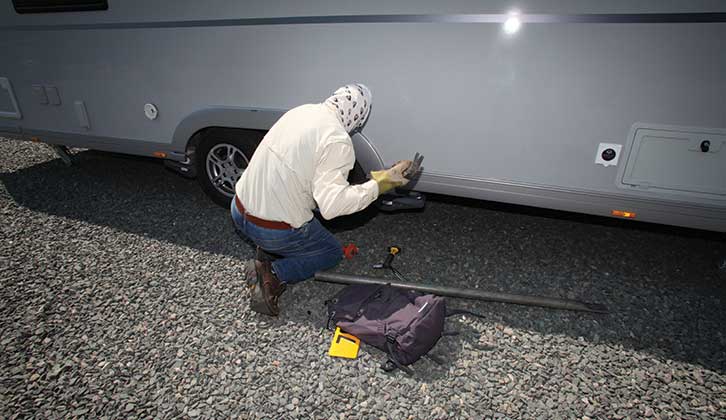
The thief makes a quick getaway, but after just 19 seconds, the owner’s mobile gets an automated text message from Outsmart the Thief, asking if we are with our caravan and if we have accidentally triggered the alarm.
As the caravan has been ‘stolen’, the owner is about to call OSTT, when the phone rings – it’s them. Just 34 seconds since the alarm was triggered.
At this point, the tracking company would confirm the theft and contact the local police, as well as its nationwide network of ‘spotters’ – a surprisingly effective group of enthusiastic caravan and motorhome fans who have eagle eyes for stolen leisure vehicles.
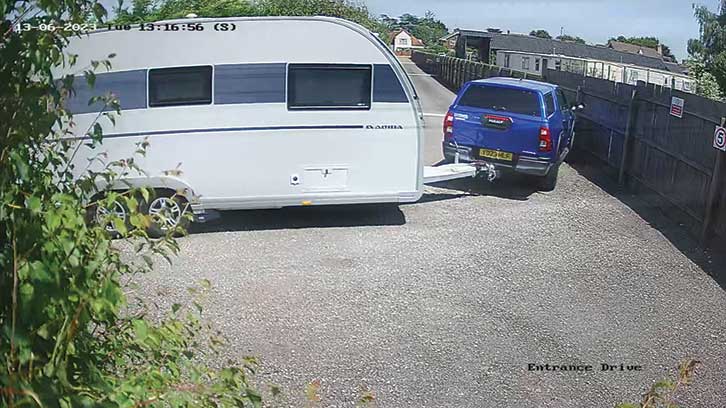
Of course, as mentioned earlier, you should never chase and confront caravan thieves yourself, but for the sole purposes of this test, we did just that.
Outsmart the Thief sent a web link to the owner’s phone by text message, and when we clicked on it, a map of the area appeared on screen, showing the precise location and direction of travel of the ‘stolen’ van. We set off in pursuit.
By this point, the thief had gained a few minutes’ lead, but looking at the phone, it was easy to see the direction in which they were headed.
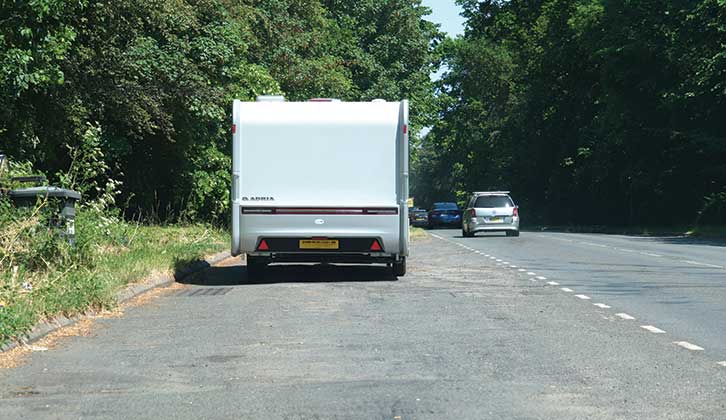
We drove through town and out into the sticks, and it was not long after this that we saw the thief had stopped off in a layby, around 10 miles away from the original scene of the ‘theft’.
So in just a matter of minutes, we had caught up and reclaimed the caravan.
To be honest, I was secretly hoping for a bit more of a chase and perhaps a little ‘Hollywood’ excitement, but in the end, the tracker was boringly effective!
The verdict on caravan trackers
This test really was a very impressive performance by the Outsmart the Thief tracker system, and I’m pretty sure that other major brands providing monitoring can deliver similar expertise.
So if this test proves one thing, it’s that modern tracker technology works.
Of course, the reaction time of the tracker company is crucial, as it often means that a vehicle can be traced and returned to its owner very quickly, before any damage is done to it.
I see from browsing various ‘stolen caravan and motorhome’ social media pages that dozens of leisure vehicles are pilfered each week. Often it seems, the thieves park up the stolen vehicle for a day or two immediately afterwards, to see if it is located with a tracker, before going back to pick it up. Those are the ‘golden hours’ when you could get your caravan back virtually unharmed.
Protecting your prized possessions from thieves is always a battle of wits, but if our test was anything to go by, a top-quality tracker and alarm system can give you the best chance of getting your beloved caravan back quickly, and importantly, still in one piece.
It’s not your tourer you should be protecting either – don’t forget the car security steps you can take to ensure your towing vehicle remains safe too.
Lead image: Getty
If you’ve enjoyed reading this article, why not get the latest news, reviews and features delivered direct to your door or inbox every month. Take advantage of our brilliant Practical Caravan magazine SUBSCRIBERS’ OFFER and SIGN UP TO OUR NEWSLETTER for regular weekly updates on all things caravan related.

